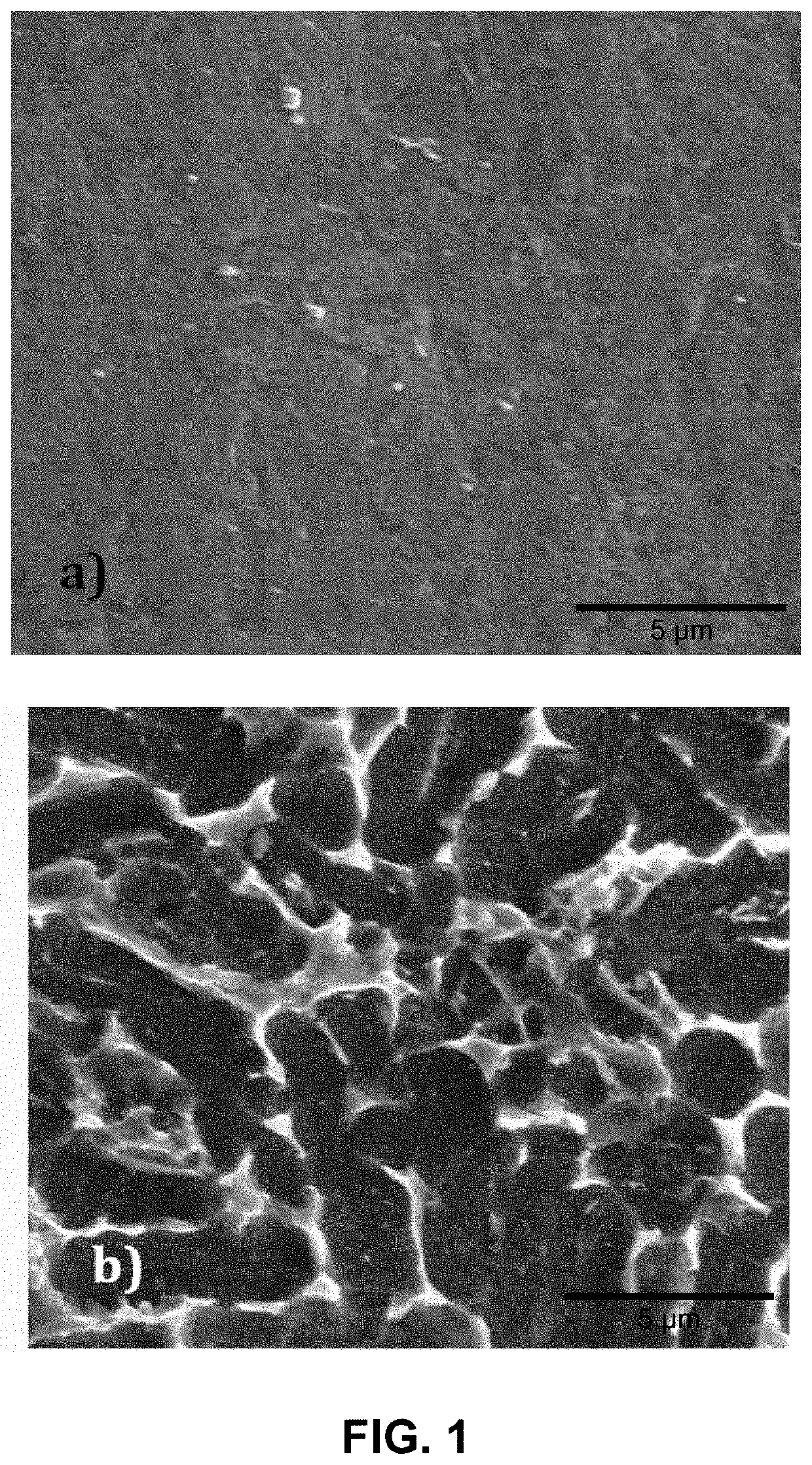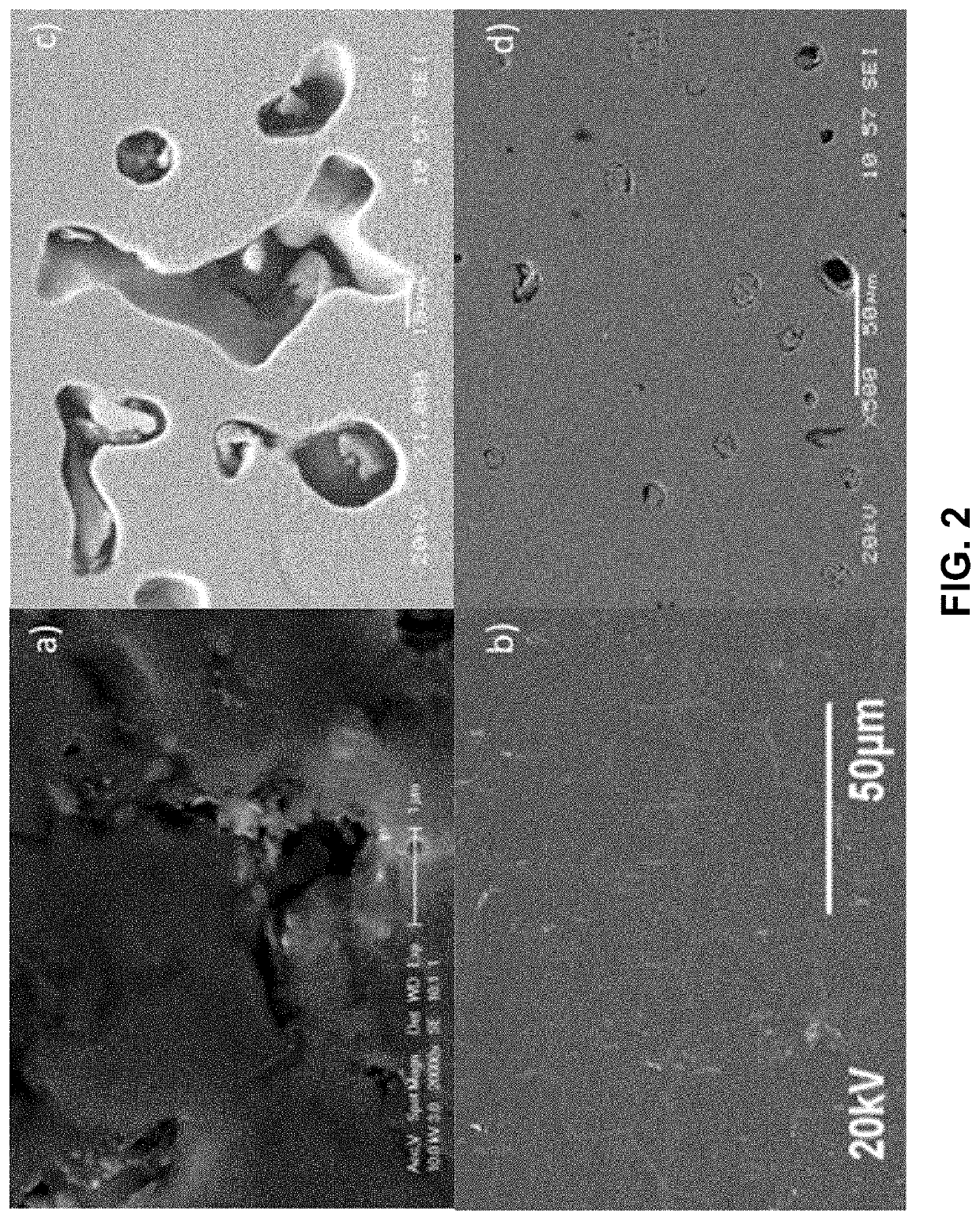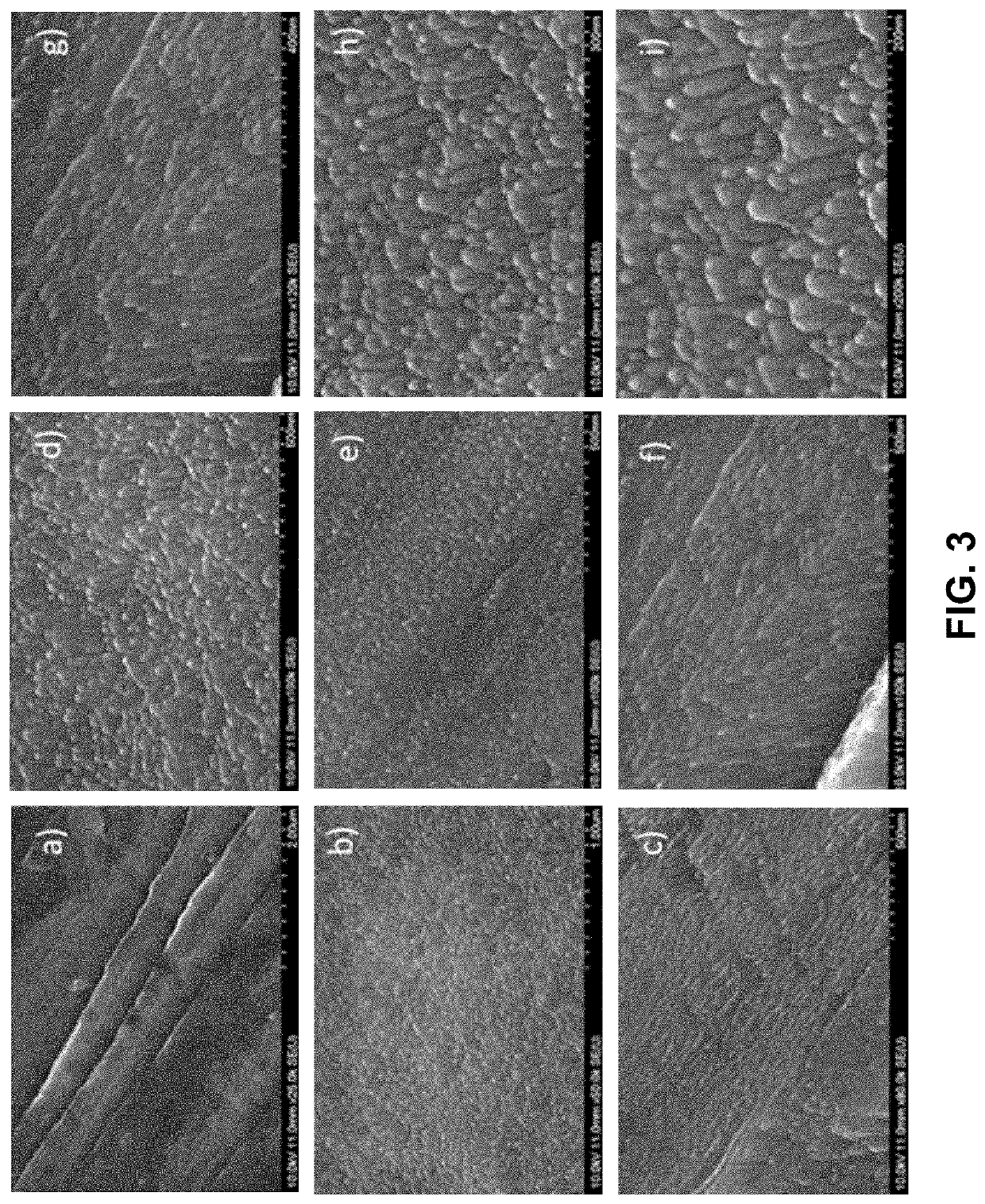Nanostructured titanium-based compositions and methods to fabricate the same
a titanium-based composition and composition technology, applied in the field of nanostructured titanium-based compositions and methods to fabricate the same, can solve the problems of increasing the risk of implant loosening and bone fracture, and little control over surface reactions, etc., to achieve enhanced local mechanical properties, enhanced biocompatibility, and enhanced local mechanical properties
- Summary
- Abstract
- Description
- Claims
- Application Information
AI Technical Summary
Benefits of technology
Problems solved by technology
Method used
Image
Examples
example 1
Irradiation Synthesis (DIS) of Rough and Porous Titanium Implants for Bone Tissue Repair
Abstract
[0183]It is recognized that medical grade titanium alloys, like commercially pure titanium (cpTi), are the best metallic biomaterials for bone replacement, primarily due to their excellent balance between biomechanical properties and in-vivo biocompatibility response. However, they have two important disadvantages: stress shielding and subsequent bone resorption due to stiffness mismatch with respect to bone, and the lack of osseointegration due to fibrous tissue around implants. Porous cpTi implants have been demonstrated to be an alternative for stress shielding and different techniques of surface modification like controlled roughness have been implemented for improvements of cpTi osseointegration. In this work we have modified samples of both rough and powder metallurgy (PM) porous cpTi by directed irradiation synthesis (DIS) with the aim of evaluating the capability to produce surfac...
example 2
tured Ti6Al4V Biointerfaces by DIS for Endothelial Cell Stimulation
Abstract
[0285]Degradation and damage of human tissues are one of the most important public health problems that often compromise the patient's quality of life. Multi-disciplinary teams from government to academic / industrial networks routinely confront this challenge seeking to develop practical treatments and repair. For damage to bone tissue, it is widely recognized that medical grade titanium alloys, such as Ti6Al4V, is the best biomaterial for bone repair due to an optimal balance between its biomechanical and biocompatible properties. Several cases in the literature exist that test the hypothesis of using Ti6Al4V for growth stimulation of other tissues different than bone by some type of surface modification. In this work we have obtained, for the first time, high-fidelity control of surface nanostructures on medical grade Ti6Al4V by using ion-beam sputtering (IBS) resulting in control of cell shape, adhesion and...
example 3
f Titanium Nanostructuring Approach
[0382]The following is a description of some aspects of the method to generate the compositions of matter and surfaces along with specific functions elicited by the same. A conceptual connection to the surface to be claimed can be illustrated as in Scheme 1:
[0383]The wide scope and variety of surface structures can be synthesized by either DIS or DPNS, depending on desired function or exemplary embodiments of structure and function. For example, to elicit an immune-modulated response for macrophage phenotype that have anti-inflammatory osseoconductive properties, an exemplary embodiment of these structures would be made of medical-grade Ti alloy exposed to a particular fluence, angle of incidence, energy and species in the energetic particle beams from either DIS or DPNS methods. We organize by surfaces having structures defined with: topography, microstructure and surface composition.
[0384]1. Nanotopography:
[0385]Based on the different experimenta...
PUM
| Property | Measurement | Unit |
|---|---|---|
| distance | aaaaa | aaaaa |
| incident angle | aaaaa | aaaaa |
| energy | aaaaa | aaaaa |
Abstract
Description
Claims
Application Information
 Login to View More
Login to View More - R&D
- Intellectual Property
- Life Sciences
- Materials
- Tech Scout
- Unparalleled Data Quality
- Higher Quality Content
- 60% Fewer Hallucinations
Browse by: Latest US Patents, China's latest patents, Technical Efficacy Thesaurus, Application Domain, Technology Topic, Popular Technical Reports.
© 2025 PatSnap. All rights reserved.Legal|Privacy policy|Modern Slavery Act Transparency Statement|Sitemap|About US| Contact US: help@patsnap.com



